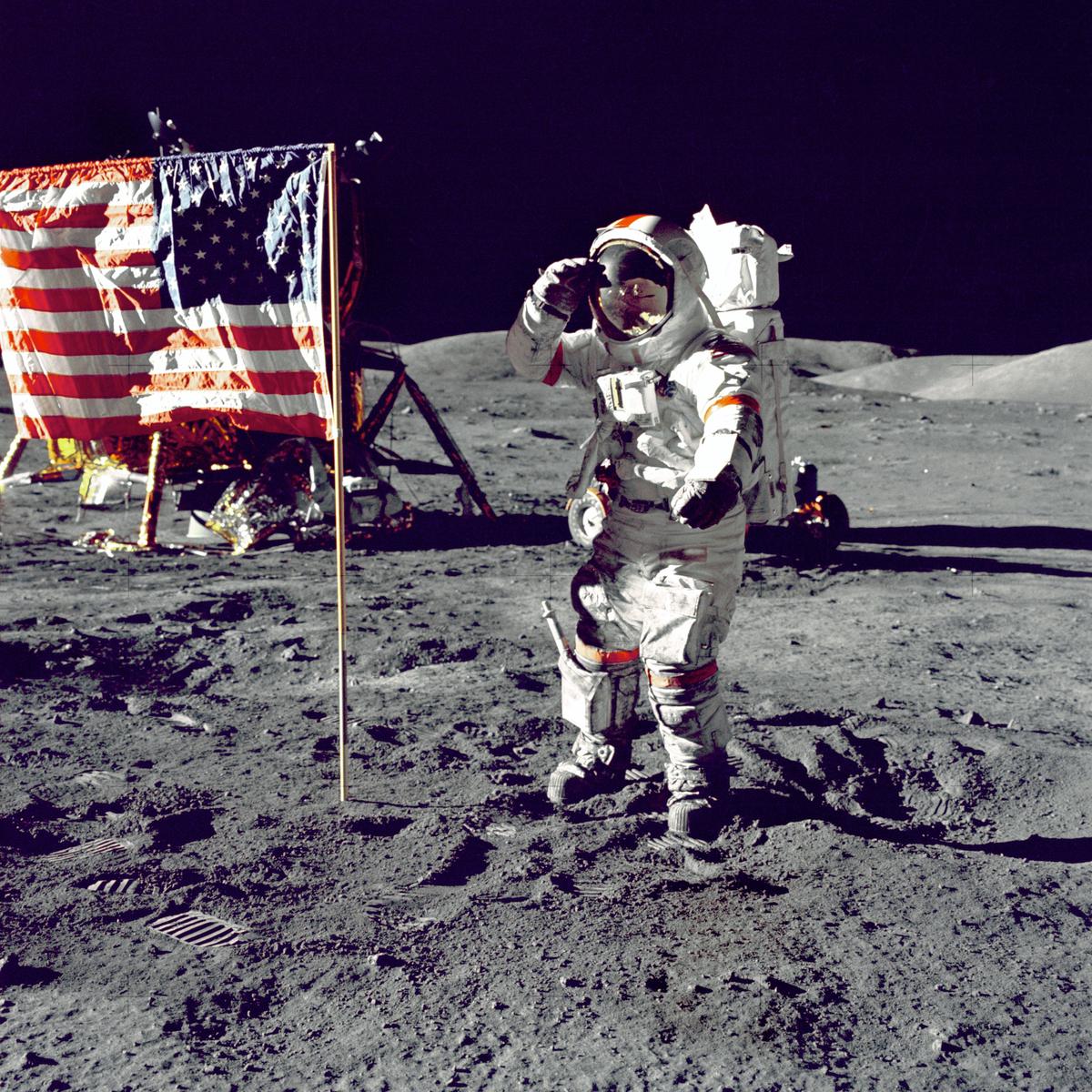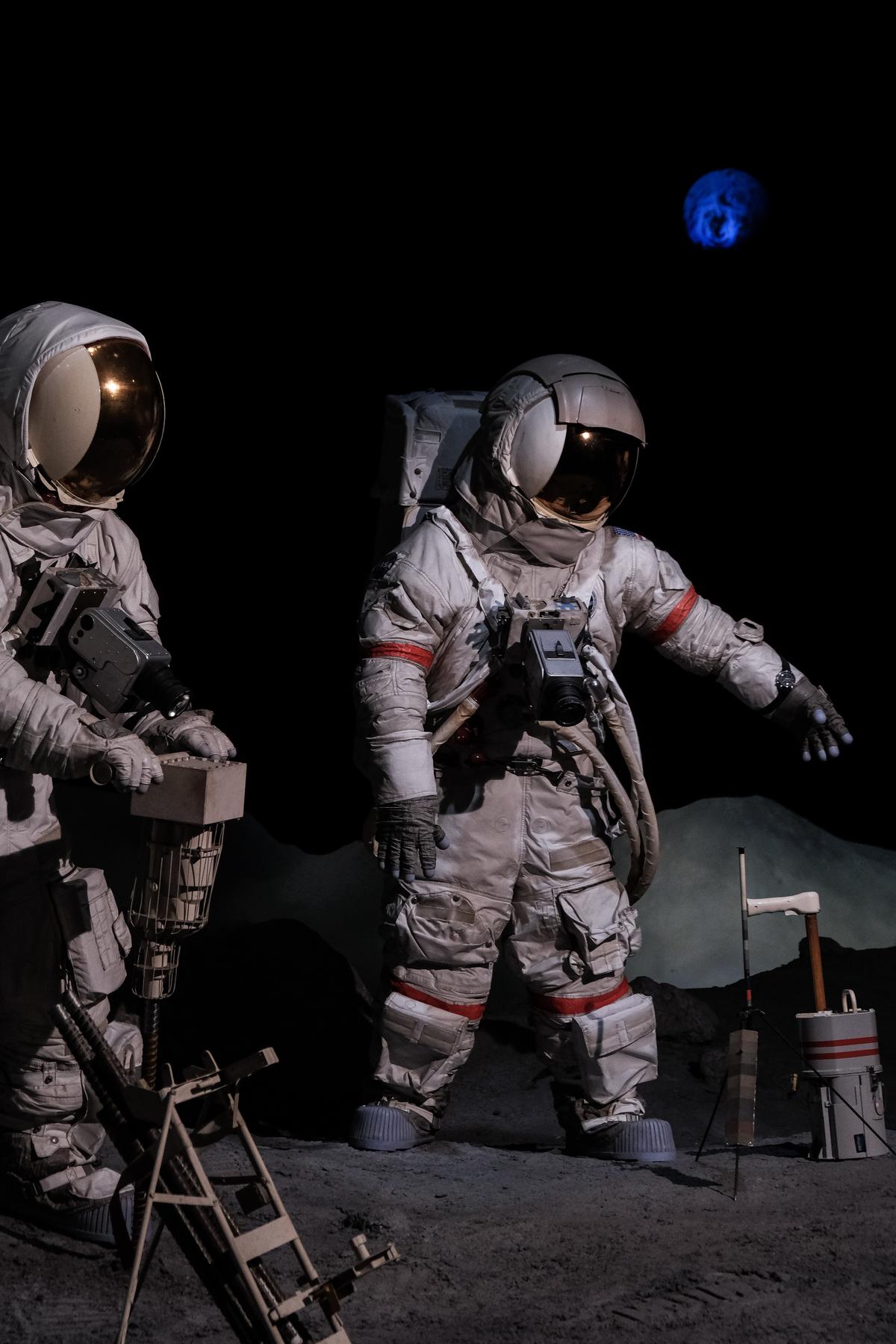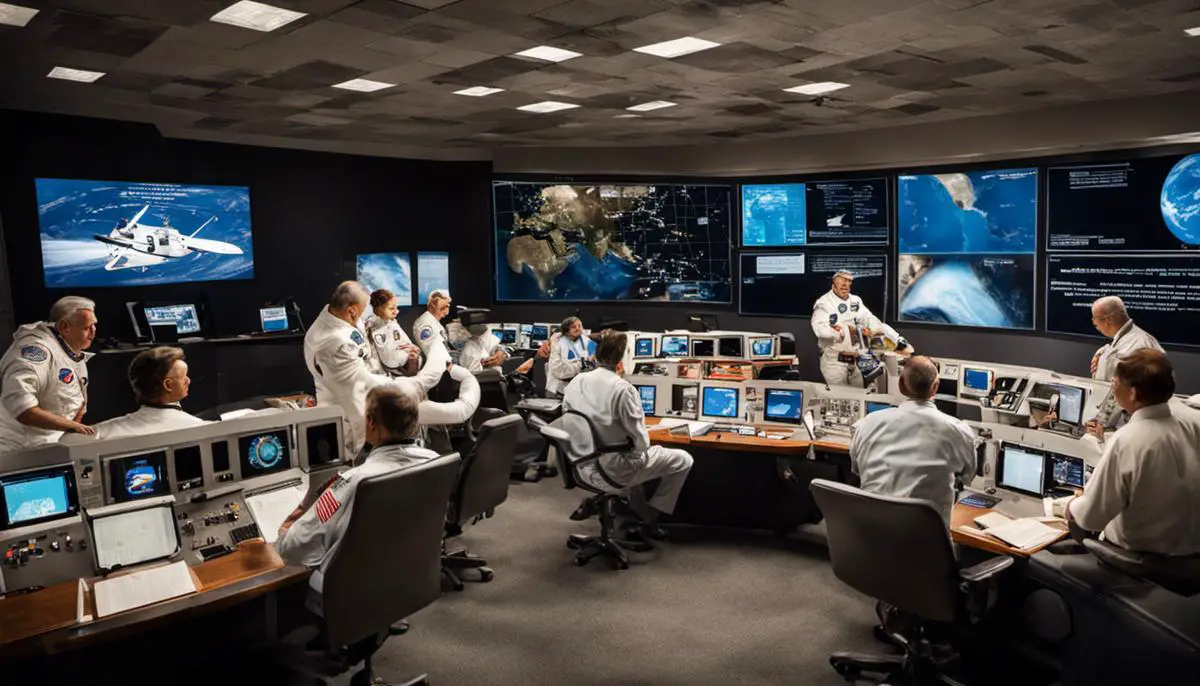Over half a century ago, the Apollo missions commanded by NASA set a daring precedent in the world of space exploration. Traveling beyond the confines of earth for the first time, human beings set foot on the moon, forever changing our perception of the cosmos. This phenomenal undertaking was not something achieved overnight, but was the result of meticulous planning and tireless efforts. This study delves into the journey of the Apollo missions, beginning with the early planning stages and preparations that led to selection of astronauts, the technology employed and launched, the human experiences throughout their journey, and lastly, the lasting legacy they left behind, both politically and scientifically.
Contents
Planning and Preparations for Apollo Missions
Early Discussions and The Mission’s Objectives
The Apollo missions were more than just an ambitious aspiration to venture into the great beyond. In the early discussions, these missions were driven by the space race with the Soviet Union and the direct mandate issued by then-President John F. Kennedy. The primary objective was to land a man on the moon and return him safely to Earth. The mission was further divided into several stages – Apollo 1 through Apollo 10 – each with specific goals geared towards testing different aspects of the mission, including launching, orbiting, and lunar landing.
Selection of Astronauts
NASA’s selection process for the Apollo missions was meticulous. Military jet test pilots with engineering backgrounds were initially considered candidates, although the selection criteria evolved as the missions progressed. These astronauts weren’t just chosen for their flying prowess. They needed a certain level of physical and mental resilience, the ability to endure long periods of isolation, and the technical knowledge to troubleshoot problems in space. All in all, 32 astronauts formed the Apollo roster, including luminaries like Neal Armstrong, Buzz Aldrin, and Michael Collins.
Rigorous Training
Once selected, astronauts underwent intensive training that was designed to prepare them for every aspect of the mission, from the zero-gravity environment to the lunar surface. The astronauts trained in numerous simulators replicating the space and lunar module systems and environments. They learned to identify lunar geological features, carry out extravehicular activity (EVA), and practiced in-flight navigation and orbital rendezvous maneuvers. A significant part of their training also focused on survival skills for emergency landings on Earth.
Challenges Faced
The Apollo missions weren’t devoid of difficulties. One major setback was a disaster during a routine preflight test for Apollo 1, leading to the tragic loss of all three crew members due to a fire in the module. This led to a considerable redesign of the command module and instated novel safety features. Apollo 13 also faced an unforeseen problem just over two days into the mission, an oxygen tank explosion, which led to the famous line, “Houston, we’ve had a problem here.” These and several other challenges set the stage for incremental improvements for each subsequent mission.
Scientific Predictions
Before the Apollo missions, our knowledge of the moon was primarily based on observations from Earth and theories of solar system formation. Scientists predicted that they would find a cold, desolate, cratered landscape with minimal geologic diversity. The Apollo missions proved many of these assumptions correct but also provided some surprising discoveries. For example, they found moonquakes occurring on the lunar surface, suggesting that the moon was not geologically dead. Seismic readings taken by the Apollo missions are still being used to draw new scientific conclusions about the moon today.
Value beyond Space
The value of the Apollo missions extended well beyond the achievement of lunar exploration. The missions led to multiple technological advances, including a better understanding of spacecraft design and navigation, improvements in communications, and even developments in freeze-dried food. The missions also redefined human understanding of space and our place within the cosmos. The iconic image of Earth taken from lunar orbit during Apollo 8, known as ‘Earthrise’, continues to be a symbol of our planet’s fragility and the unity of humanity.
Unfolding the Legacy of Apollo Missions
The legacy of the monumental Apollo missions continues to profoundly influence the path of modern space exploration, providing a sturdy educational and technical foundation for current and impending space generations. These missions were instrumental in teaching us critical lessons about exploring the cosmos, establishing a precedent for international cooperation in this arena, and nurturing a generation’s dream to touch the stars. As we envisage the prospects of reconquering the moon and venturing further, the shared knowledge and triumphs from the Apollo missions bolster our strides into the uncharted.

Technical Aspects and Innovations
Exploring the Miracles of Apollo Spacecraft Architecture
Peeling back the layers of the Apollo missions’ spacecraft design exposes a three-part assembly: the Command Module (CM), the Service Module (SM), and the Lunar Module (LM). The CM served as the astronauts’ home for the majority of their mission, outfitted with essential life support systems. Complementing this was the SM, which accommodated the main propulsion engine and powered the CM while also providing life support — a critical function until it was released just prior to the craft’s reentry into Earth’s atmosphere.
The true ingenuity, however, was embodied in the LM. Crafted specifically for the lunar descent and ascent, this two-tiered vehicle consisted of a lower, descent stage, which contained the engine needed for lunar landing and which also functioned as a launch pad for the ascent stage. The upper, or ascent stage, was equipped with a smaller engine, used for return from the moon and for synchronizing with the CM in lunar orbit.
Spacesuits and Their Innovations
Spacesuits are another significant technological marvel from the Apollo program. The A7L suit was custom-made for each astronaut, and it acted as a personal spacecraft providing life support, cooling, and protection. They were designed to withstand lunar temperature extremes, protection from micrometeoroid impacts, mobility to walk and bend, and life support in case of primary system failure. Remarkably, the suit could even self-seal if punctured.
Behind the Scenes: Mission Control
The Mission Control Center at Johnson Space Center in Houston, Texas, was the Apollo missions’ nerve center. It was populated by flight controllers responsible for the safe conduct of the missions. They had real-time access to data from various spacecraft systems, and Ames Research Center delivered critical flight dynamics data.
Technological Advancements from Apollo Missions
Some of the most enduring impacts of the Apollo missions are the technological innovations that have found their way into everyday life. A key example is the integrated circuit, the precursor to the modern microchip, which experienced immense development due to demands for miniaturization. Today, microchips are essential components in most electronic gadgets, from computers to mobile phones.
High-resolution satellite imaging that feeds weather updates, GPS signals, and other geolocation services were originally developed for Apollo. Even cordless tools trace their origin to the Apollo program, which needed lightweight, portable, battery-powered tools for astronauts’ use during lunar EVAs.
Safety Measures and Contingency plans
Given the high risks, safety measures and contingency plans were paramount. Each mission had detailed abort procedures for every phase of the mission, with numerous backups and redundancy built into the spacecraft and equipment. For instance, the Apollo lunar module had a separate ascent stage that could separate and blast off if the descent engine failed.
One contingency plan, the “Apollo abort guidance system,” was intended to guide the crew to a safe orbit in case the primary guidance system failed. Additionally, every potential scenario was simulated and planned for, including astronaut illness, systems failure, and even loss of communication.
Apollo 1 tragically illustrated the importance of safety. The command module caught fire during a preflight test, killing all three astronauts aboard. The subsequent investigation led to critical changes in design, procedure, and safety standards which played a pivotal role in subsequent missions’ successes.
The Apollo program, a glorious testament to human intellect and curiosity, represents our profound urge to unravel mysteries beyond our terrestrial confines. More significantly, it underscores a steadfast commitment to safety and thorough planning that is often overlooked. From intricacies of the spacecraft to the dynamics of mission control, each factor of the Apollo missions was crafted with thoughtfulness, driven by the principle of prioritizing astronaut safety.

Real-Time Mission Experiences
Countdown to Adventure: The Apollo Missions Lift-off
The initiation of an Apollo mission was a blend of thrilling anticipation and profound apprehension for those on board. The countdown sequence was a crucial phase that demanded profound focus from both the astronauts within the spacecraft and the mission control team on the ground. The massive Saturn V rocket engines, akin to fiery dragons, roared into life, their thundering vibrations shaking the launchpad, a sensation astronauts equated to a train raging up one’s spine. They often conveyed the sound as an overpowering thunderous roar, which consumed them even within the confines of the spacecraft. As the rocket ascended, they experienced a sense of consistent acceleration that felt like an unrelenting force against their chests.
Journey to the Moon
As the spacecraft made its way to the moon, the astronauts had to cope with a number of issues. There was the discomforting feeling of weightlessness, the cramped living conditions, and the need to perform various technical tasks. They stayed in contact with mission control, providing updates and asking for assistance in troubleshooting any technical complications.
Moon Landing
The Moon landing was the highlight of the Apollo missions. It was a challenging task that required precision and calm. The Lunar Module (or the LM) detached from the Command Service Module, then proceeded to descend towards the Moon’s surface. During Apollo 11, Neal Armstrong famously took control of the Lunar Module manually due to navigating boulders and craters. The landing was often described as a gentle touch down, and when Armstrong first stepped on the moon, he described the surface as “fine and powdery.”
Lunar Exploration
Once on the moon, astronauts performed experiments, collected rock samples, and set up equipment for further studies. The moon’s reduced gravity posed an unexpected challenge, making movements awkward. The surface of the moon was described as a desolate, quiet place with a beautiful view of the Earth hanging in the sky.
Return Flight to the Earth
The return journey was equally challenging for astronauts. It began by launching the Lunar Module back into lunar orbit, where it docked with the Command Service Module. This process had to be done with no one else to manually control it from the moon’s surface. The journey back to Earth took approximately three days, during which time the crew checked the systems, provided mission control with updates, and took a final chance to enjoy the view of space.
Re-Entry and Splashdown
Re-entry into the Earth’s atmosphere was another critical phase. The spacecraft had to enter at precisely the right angle. If too shallow, it would skip off the atmosphere and fly back into space; if too steep, it would cause intense heat that can damage the spacecraft. After successfully breaching the atmosphere, the astronauts would deploy parachutes, slowing the spacecraft down for a water landing in the ocean. The “splashdown” ended the mission, followed by the crew’s retrieval by a recovery ship.
Overcoming Challenges
The Apollo missions had to overcome numerous challenges and unforeseen incidents. The crews often had to adapt to unexpected situations. For instance, during the Apollo 13 mission, an oxygen tank explosion forced the mission to be aborted. The crew, alongside mission control, overcame the life-threatening situation by modifying the Lunar Module into a “lifeboat,” improvising a carbon dioxide removal system, and performing critical navigational corrections for a safe return to Earth.
Final Thoughts
An examination of the Apollo missions imparts a clear depiction of the trials astronauts traversed. Their heroic display of tenacity, prowess, and poise throughout their exploration of the moon up until their safe arrival back home is laudable.

Impact and Legacy of the Apollo Missions
A Closer Look at the Apollo Missions
Bearing witness to an array of historic accomplishments from 1961 to 1972, the Apollo missions mark an extraordinary milestone for humanity, especially with the unprecedented feat of successfully landing a man on the moon. Yet, the importance of these missions reaches beyond their immediate triumphs, granting profound socio-political and scientific outcomes. The Apollo missions, a visible symbol of space exploration competition between the United States and Soviet Union, represents an exhibition of robust human determination and technological progression, and a reflection of the fierce rivalry and politics at play during the Cold War era.
On a societal scale, experiencing the Apollo missions reshaped our understanding of space and our position within it. Images of the Earth seen from the moon prompted the concept of an “Earth community” with no dividing borders. Engaging with this notion for the first time, we perceived Earth as a delicate entity situated within the vast emptiness of space, thus creating a newfound shared sense of accountability for our planet. This paradigm shift provoked a surge in environmentalism interest and investment, igniting a global discourse about space as a united resource.
From a standpoint of technology, these Apollo missions gave birth to countless consequential spin-off technologies that have permeated numerous sectors including advanced computing, telecommunication, materials science, health care, and many more. A variety of commonplace items we use today, such as scratch-resistant lenses, CAT scanners, and cordless tools, are an homage to the innovations initially devised for the Apollo missions.
The space race, specifically, played a complex role in the geopolitical scenario. It not only provided a peaceful battleground for the United States and the Soviet Union to vie for technological prominence during the Cold War but also led to a shift in global space exploration cooperation, catalyzing collaborative projects like the Apollo-Soyuz Test Project and eventually the International Space Station.
The impact of the Apollo missions upon future space exploration is nothing short of momentous. Accomplishing the formerly unimagined task of a lunar landing, NASA effectively raised the bar for space exploration ambitions. The intelligence gleaned from these missions paved the way for ongoing space excursions, such as Mars rover missions and asteroid probes. Currently, NASA’s Artemis program, with the objective of returning humans to the moon by 2024, is a testament to Apollo’s influential legacy.
Perhaps the most timeless legacy of these Apollo missions is their enduring capability to provoke a fascination for science and space exploration among successive generations. By breaching prior limitations in space travel, the Apollo missions have left an indelible imprint on human imagination regarding what can be achieved. They stand as more than a mere celebration of technological advancement and human ingenuity, but as an embodiment of the timeless attraction towards exploration and the quest to comprehend the unknown. Altogether, the true victory of the Apollo missions is encapsulated in the innovation they fostered – a spirit that propels mankind to explore beyond the confines of our knowledge and abilities.

Photo by joehan330 on Unsplash
Years after the last Apollo mission, its influence still echoes through space and time. The Apollo missions have not only edified our understanding of space, but also have brought about significant technological advancements that continue to benefit and propel our society. More than that, they have left an indelible mark on humanity’s collective psyche. They provoked us to reconsider the limits of our capabilities and essence of our existence. From sparking new scientific discoveries, reshaping the political landscape during the space race, to creating a new paradigm for future space explorations, the influence of the Apollo missions extends well beyond the sphere of space. As we continue to explore the universe, the legacy of the Apollo missions will forever be a beacon that illuminates our pursuit of knowledge and our aspiration to journey into the unknown.

With a passion for unraveling the mysteries of the moon, Dr. Luna Sterling is a highly-respected astrophysicist, a dedicated lunar enthusiast, and a captivating blogger. After earning her Ph.D. in Astrophysics from the Massachusetts Institute of Technology (MIT), she served as a lead scientist and mission planner for NASA, contributing significantly to various lunar missions.
For over two decades, Luna has been at the forefront of lunar science, pushing boundaries and pioneering discoveries that have enriched our understanding of the moon’s geological history. However, it’s her infectious enthusiasm for all things lunar that truly sets her apart.
In an endeavor to bring the moon closer to everyone, Luna started her blog, “Luna’s Lens: A Closer Look at the Moon.” With this platform, she offers a unique blend of intriguing moon facts, updates on lunar missions, and personal anecdotes from her experiences in the field, all told in an engaging and accessible manner.
Luna’s unique blend of scientific expertise and warm, humorous writing style has transformed complex astrophysics into compelling narratives that captivate her audience. As a gifted communicator, she leverages her knowledge and experience to relate scientific facts to everyday life, thus making her blog a must-read for both seasoned space enthusiasts and curious newcomers.
Interactive and inviting, Luna frequently encourages reader engagement through thought-provoking discussions and a monthly ‘Ask Dr. Luna’ feature, where she personally answers questions about the moon and space exploration. A celestial storyteller at heart, Dr. Luna Sterling’s passion for the moon is as vast as the cosmos she explores, making her an invaluable beacon in the world of lunar science.
